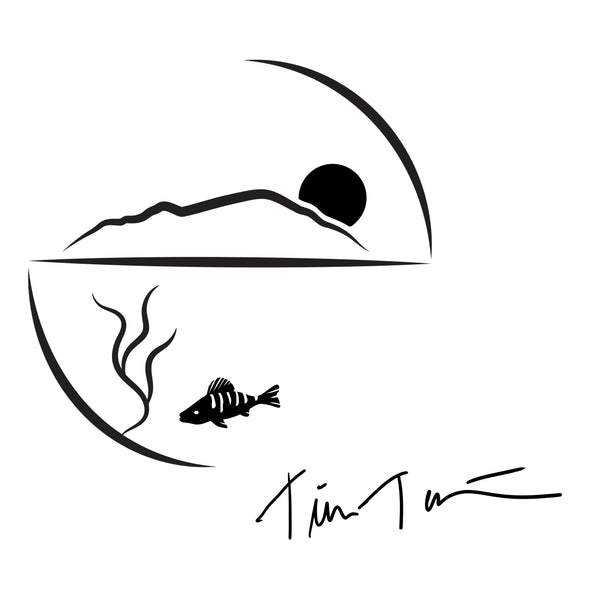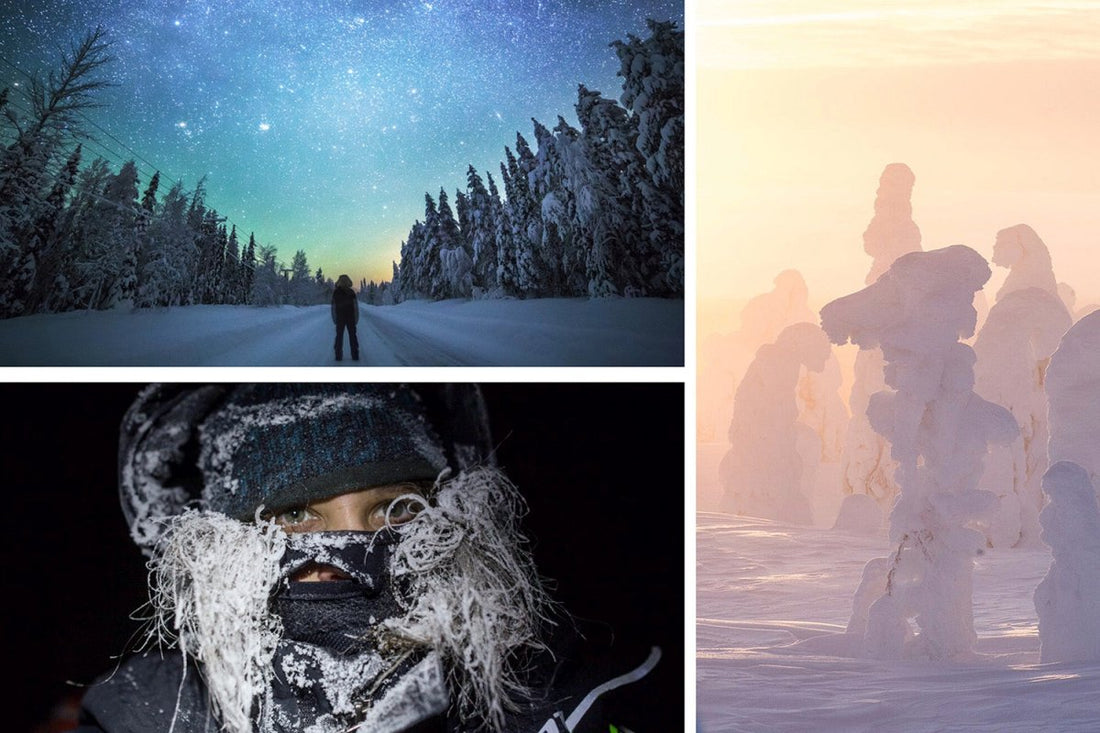PHOTOGRAPHING IN LAPLAND WINTER
Lapland is a popular northern lights hunting destination, but I will tell you about the arctic light in this article. Where and when is the best time to photograph the arctic light during the winter?
Finland is one of the world's northernmost countries, and Lapland is Finland's largest and northernmost region, about 500km long. Most of the Lapland is under the polar night during mid-winter. The polar night is when the sun no longer rises above the horizon. In the Northern Lapland, the polar night lasts almost two months.
Polar night and photography?
The polar night in Lapland is not complete darkness; it's like twilight, lasting a few hours between the "nights." If you want to shoot mostly night scenes, then the polar night is not an issue.
Otherwise, it may be challenging, especially where polar night lasts for weeks. Cloud coverage during the polar night means "complete" darkness around the clock.
You will get the most hues during the last days of the polar night as the sun is already close to the horizon.

30. Jan 11:30 AM. // Paistunturi wilderness area, Utsjoki

28. Jan 10:15 AM. // Pöyrisjärvi Wilderness area, Enontekiö

Polar night statistics from 2016, days may vary a bit annually.
RECOMMENDED LOCATIONS DURING AND AFTER POLAR NIGHT :
- Pallas - Yllästunturi National Park
- Kilpisjärvi, Käsivarsi wilderness area
- Pöyrisjärvi wilderness area
- Paistunturit wilderness area
- Enontekiö, Muonio
- Utsjoki, Ivalo, Inari, Saariselkä
- Levi, kittilä, Sodankylä
Photographing after the polar night
Ultimately, the best time to shoot the northern Lapland's winter landscapes is the first weeks after the polar night. The light is the most epic when the day lasts about 2 to 6 hours. At that time the light is evolving every minute, and there are many hues in just a few hours.
You have the same light conditions two times, first in Southern Lapland when the North is under the polar night, and once the South gets too bright, you go up North and have the same light again.
Depending on your location, the polar night begins at different times. Use a day-length calculator or app like Sun surveyor to plan your photographic trip.
The light will still be good for weeks after the polar night, but you have more time between sunrise and sunset when the days get longer. On the other hand, there is more time to explore the area and find the best spots.
HOW TO GET MOST OF THE ARCTIC WINTER LIGHT?
If you have the time, first explore the Southern Lapland and then take a trip to the Northern Lapland after the polar night.
- Alternatively, you can plan your trip to a location where you can experience the last days of the polar night and the first sunny days after it.
- You can also plan your trip to a location with 2 to 6 hours of daylight.
When the day lasts just a few hours, you will have the continually changing amazing arctic light. Even if there are clouds, you'll still have enough light for a daytime photo shoot.
I love the short days because you can have a sunrise and a sunset in the same set and even continue to shoot night scenes before 9 PM.
When the days get longer, you'll need to wake up earlier to shoot the sunrise, and there are the dull hours of white light before the sunset.
The best time to shoot the arctic light below the polar night area is from mid-December to the beginning of February.
RECOMMENDED LOCATIONS :
- Syöte, Syöte National Park
- Pyhä - Luosto National Park
- Kuusamo area, Oulanka National Park
- Posio area, Riisitunturi National Park
- Salla, Eastern Lapland in general

26. Jan 1:03 PM. // Iso - Syöte, Pudasjärvi

23.Dec 4:55 PM // Posio, Finland

RECAP
- The arctic light is at it's best when the day length is about 2 to 6 hours.
- Southern Lapland offers the best light from mid-December to the beginning of February.
- Northern Lapland provides the best light after the polar night.
- Check out the day length calculator for when the polar night ends.
- National parks are easy to access during winter time with snowshoes, skis or even with a fat bike.
- Access to wilderness areas is challenging during the winter time, and local guidance is essential in most cases. Feel free to ask my help for finding the right guides.
Useful links
Winter gear tips
Equipping yourself for winter photography is crucial for capturing stunning images amidst the snow and ice. While warm winter clothing is necessary, a few items are often overlooked.
First and foremost, ditch the finger gloves and opt for proper mittens. Forget about zippered technical photography gloves or finger gloves, as they offer little warmth in frigid conditions. Instead, embrace the warmth and practicality of ski mittens. Wear a thin pair of Merino wool finger gloves underneath the mittens to maintain agility.
Mittens provide superior warmth and allow quick removal and easy attachment to your jacket sleeves. Finger gloves, however, will leave your hands numb and clumsy, hindering your photography efforts.
I also like boots because short shoes are uncomfortable in the snow, as snow sometimes gets into the shoes and your ankles get cold.
Usually, I don't use a tripod at all during daylight, but in winter conditions, it's essential to have a sturdy tripod.
Even if you are out during daylight, remember that darkness comes early, and if your schedule extends, you will need a light. I prefer Armytek brand headlamps. I have used them for over ten years without any issues, and this is not a paid advertisement. It's good to have two lights or at least several batteries with you.
Don't use finger or toe warmers; disposable heat packs produce too much heat, which can cause sweating in the toes, for instance. When their power runs out, you will have damp toes that can quickly freeze. Instead, use warmers in the same pocket to keep your extra batteries warm!
Finally, carrying a thermos full of hot drinks and snacks is always a good idea. These not only help in keeping you warm but also provide much-needed energy during your outdoor photography sessions in cold weather.
Feel free to reach out if you have questions! I'm here to help you plan your trip, suggest the best gear, or even connect you with local guides who can lead you to the most breathtaking spots in Lapland. I even do some small group or one-to-one guiding.
Happy shooting, and stay warm out there! 📸❄️



Selfie after 5 hours - 43°c photoshoot.



